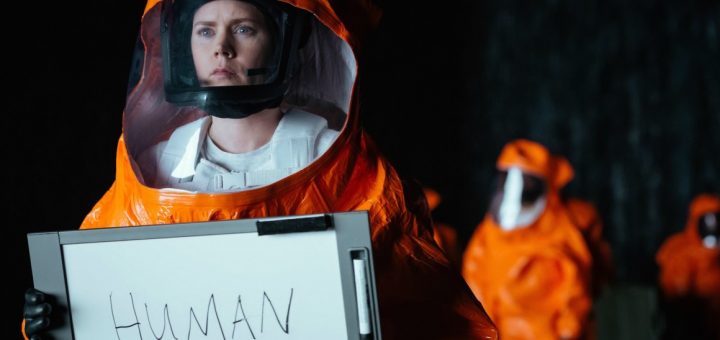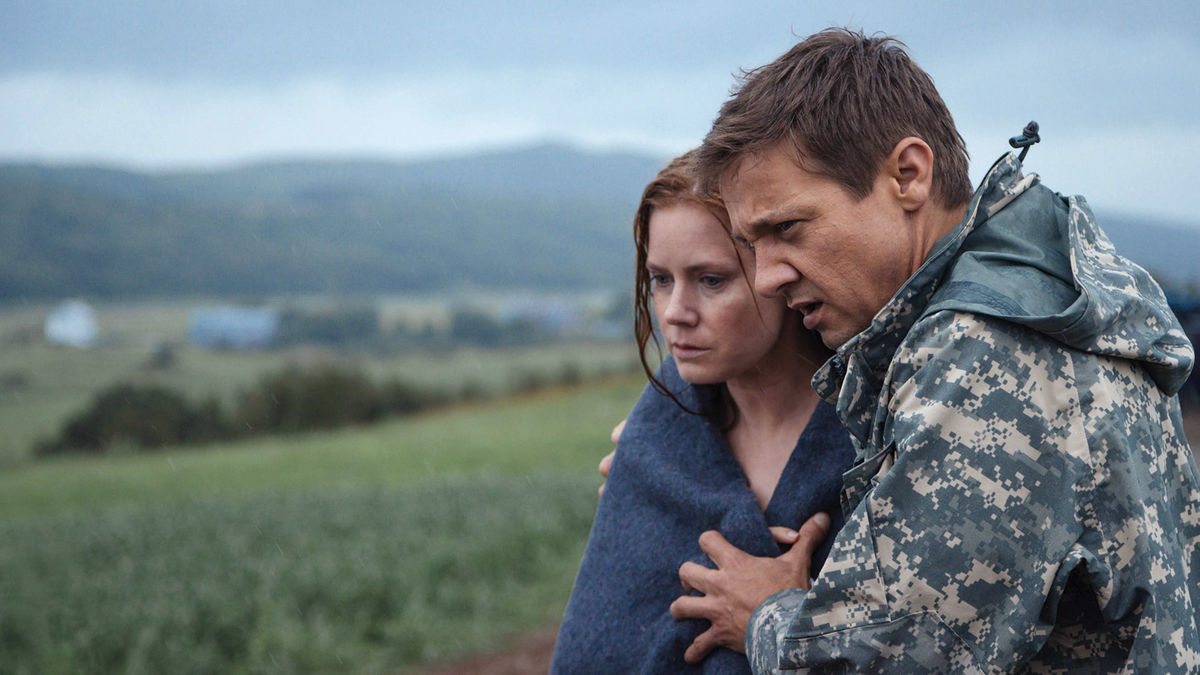If you haven’t seen Arrival (2016), this is the plot description from Wikipedia:
“Linguistics professor Louise Banks (Amy Adams) leads an elite team of investigators when gigantic spaceships touch down in 12 locations around the world. As nations teeter on the verge of global war, Banks and her crew must race against time to find a way to communicate with the extraterrestrial visitors. Hoping to unravel the mystery, she takes a chance that could threaten her life and quite possibly all of mankind.”
This is an exciting, persuasive, and technically accurate description of the film, but based on this description, you might expect the movie to be a nonstop action fest of alien attacks, space battles, and explosions, a la Independence Day.
You would be wrong.
A look at the structure of 'Arrival' - a great movie that feels like it's breaking every structure rule in the book, but actually isn't. Click To TweetI finally watched this movie after hearing raves since last year (it has a 94% fresh rating on Rotten Tomatoes). My analysis below contains only vague, mild spoilers – I’d consider it safe to read before watching unless you want absolutely zero prior knowledge.

Arrival is an Alien Invasion Art Film
Arrival is a beautiful, sad, slow, contemplative movie that feels more like an art film than a big budget blockbuster. There are dozens of lingering, moody shots of the misty green hills of Montana (actually Quebec in real life) and lengthy, silent close-ups of Amy Adams Feeling Things.
It would be easy to watch a movie like this, love it, read a hundred rave reviews, and think “To hell with structure! I’m going to write a BRILLIANT ART MOVIE like Arrival!”
Please do write a brilliant art movie like Arrival. We need a million more of these and we need them yesterday. But before you burn every dog-eared screenwriting book on your Kindle, let me make one small point:
This slow, quiet, contemplative art film follows the three-act structure covered in most screenwriting books pretty much to the minute.
To be clear, we’re making art here, not playing The Price is Right, so hitting exact page numbers from a self-styled screenwriting guru should not be your objective. But understanding how the vast majority of great movies are structured – even ones that feel like they’re breaking the rules – can be helpful if you’re getting feedback that your own script feels too slow or too rushed.
So let’s look at the structure of Arrival: a great movie that feels like it’s breaking every structure rule in the book, but actually isn’t.
We're making art here, not playing The Price is Right, so hitting exact page numbers from a self-styled screenwriting guru should not be your objective. Click To TweetArrival‘s Structure (It’s Less Subversive than It Seems)
Act 1
While this movie feels slow and meandering, it’s actually not. The aliens touch down on earth a mere four minutes into the story. Though it feels wandering and dreamlike, that first four minutes turns out to be plenty of time to comprehend the tone and theme of the movie and to understand our protagonist’s world before it changes forever.
The moment that Blake Snyder refers to as the “catalyst” in Save the Cat (he says it’s typically a phone call or a knock on the door – in this case, it’s Colonel Weber walking in the door of Louise’s office) is expected to take place about 12 minutes into this 109-minute runtime. In Arrival, it actually happens a bit earlier than that, at 9.5 minutes.
Syd Field (in Screenplay) calls a similar beat the “inciting incident” and would have expected it a hair later, around minute 14, which is exactly when Weber rings Louise’s doorbell in the middle of the night and she gets on the helicopter to go to Montana.
Either way, this is the moment in a screenplay where the protagonist receives a “call to adventure” of some sort, and it happens in this movie in a very standard way and at a very conventional time.
I want to make a note here because it’s something that’s confused me in the past: Snyder refers to the second half of Act 1 (after the catalyst) as the “Debate” section. I used to interpret this quite literally to mean the section of the screenplay where the protagonist is actually deciding whether or not to accept the offer that was made to her in the catalyst.
So, for example, I might have previously expected the “Debate” section of this movie to be the period between Colonel Weber showing up at Louise’s office and Colonel Weber showing up at Louise’s house, even though the Debate section is usually 12-15 minutes and that would be a stupidly long time to kill between those two events.
That is not what the Debate section is.
The Debate section is just the part of the story after the catalyst and before the protagonist “steps over a threshold” from which she can never return, one that literally or metaphorically takes her into an “upside down” version of her former world. In some movies that means going to another planet. In others, it just means switching lunch tables in the cafeteria or starting a new job.
In Arrival, it’s when Louise gets on that spaceship for the first time – because up until that moment, she could still call the whole thing off and go back to her old life, but once she steps into that (literally upside down) world, there is no going back.
Act 2a
Snyder thinks Act 2 starts around minute 25, and that this act break is marked by the moment our hero leaves the old world behind, and enters an “upside down version” of that world. 25 minutes is exactly when Louise and Ian enter the spacecraft for the first time, and they are quite literally (and figuratively) turned upside down.
Field would have expected that moment a few minutes later, around the time when Louise and Ian meet the aliens for the first time.
Act 2b
Both Snyder and Field think Act 2 is divided in two parts at the midpoint, which is halfway through the film (around minute 54), which they both say is a pivotal moment when the story changes and the protagonist experiences either a “false high” or a “false low” which will mirror the end of the movie.
In a louder, splashier movie, this moment would likely be marked by a huge explosion or a dramatic death. But Arrival is not a loud, splashy movie. Without going into spoiler-y detail, I believe the midpoint in this film is the conversation Louise and Ian have in the back of the truck outside the camp. It happens exactly halfway through the movie (at minute 54) and it fits both Field’s and Snyder’s descriptions. It’s a very subtle mirror for the end of the movie and is a moment when a pivotal part of our protagonist’s story (very quietly, very subtly) changes.

Act 3
Syd Field expects Act 3 to start around minute 82 in a film of this length, while Blake Snyder expects it around minute 84. Field calls this the “final showdown” while Snyder says it’s a moment when the character achieves “synthesis” by combining all that she’s learned and deciding to make one last crazy attempt to accomplish her goal.
It’s 85 minutes into the movie when Louise goes back into the spacecraft (by herself, without permission) to try one last idea that’s come to her as a result of all she’s learned. This is pretty much the literal definition of a “break into three,” and it happens when you’d expect it.
Conclusion
This movie leaves a lot of room to breathe between big moments, which I think is part of why it’s so deeply affecting – but if you look under the hood, it’s actually very conventionally paced.
And while it certainly subverts some storytelling rules (for example, I’d argue that the protagonist doesn’t truly “step over the threshold” of the story until almost the very last page – which makes perfect sense for this unique film – and subverting that expectation actually makes a powerful point) it also hits a lot of typical story beats at pretty much the exact moment we’d expect to experience them.
On a more artistic level, Nerdwriter’s video below beautifully analyzes what makes this movie so good and I recommend watching it, but be warned: the video is 100% Spoiler City. This is a film I recommend watching unspoiled, so consider watching it first. It’s free on Amazon Prime Video (as of this writing).
***
You can now like this page on Facebook! Click the “Following” dropdown and select “See First” and “Notifications On” to get notified of new posts.